.
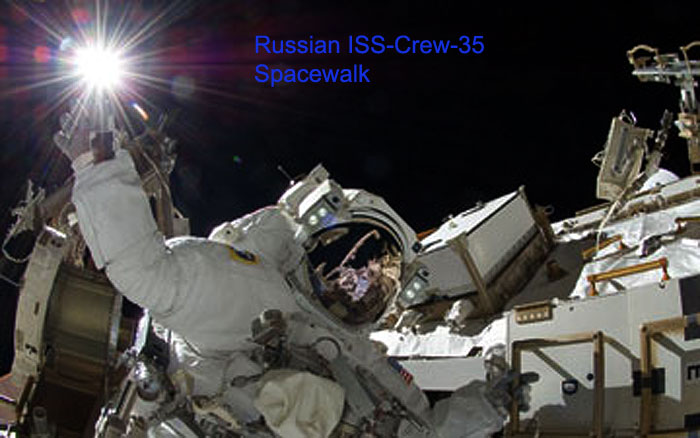
Spacewalk Preps and Communications Upgrade on Station
.
On the eve of a scheduled six-hour spacewalk, the Expedition 35 crew completed a wide-range of science experiments and wrapped up the installation of a new communication system that will enhance the research capabilities of the International Space Station.
Commander Chris Hadfield of the Canadian Space Agency and Flight Engineer Tom Marshburn of NASA began their workday by participating in several ongoing human research studies. Both astronauts tested their urine for the Pro K experiment as nutritionists monitor how dietary changes affect the bone loss that occurs during spaceflight. Afterward, Hadfield drew a blood sample from Marshburn who then processed and stored the sample in the Minus Eighty-Degree Laboratory Freezer for ISS, or MELFI, to preserve it until it can be returned to Earth for study.
Marshburn’s fellow NASA astronaut aboard the station, Flight Engineer Chris Cassidy, began his day downloading sound environment data from acoustic dosimeters worn by crew members earlier this week. Cassidy then deployed the dosimeters at various locations throughout the complex to continue tracking the noise levels that crew members are exposed to.
After the crew’s daily planning conference with flight control teams around the world, Cassidy spent much of his day setting up and operating the Capillary Flow Experiment. Results from this experiment, which takes a close look at how fluids flow across surfaces with complex geometries in a weightless environment, will improve computer models used to design fluid transfer systems and fuel tanks on future spacecraft.
.
Two members of the Expedition 35 crew will venture outside the International Space Station Friday for a six-hour spacewalk to deploy and retrieve several science experiments and install a new navigational aid.
.
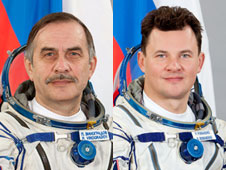
Expedition 35 Flight Engineers Pavel Vinogradov (left) and Roman Romanenko will participate in a six-hour spacewalk Friday. Credit: NASA
.
The spacewalkers' first task will be to install the Obstanovka experiment on the station's Zvezda service module. Obstanovka will study plasma waves and the effect of space weather on Earth's ionosphere.
They will retrieve the Biorisk experiment, which studied the effect of microbes on spacecraft structures. If time permits, they also will retrieve one section of the Vinoslivost experiment, which exposed materials samples to space.
While at the far end of Zvezda, Vinogradov and Romanenko will replace a faulty retro-reflector device, one of a suite of navigational aids that will provide assistance to the European Space Agency's Albert Einstein Automated Transfer Vehicle 4 cargo ship during its final approach for an automated docking to the space station in June.
.
Quelle NASA
.
Frams: NASA-TV-LIVE
.
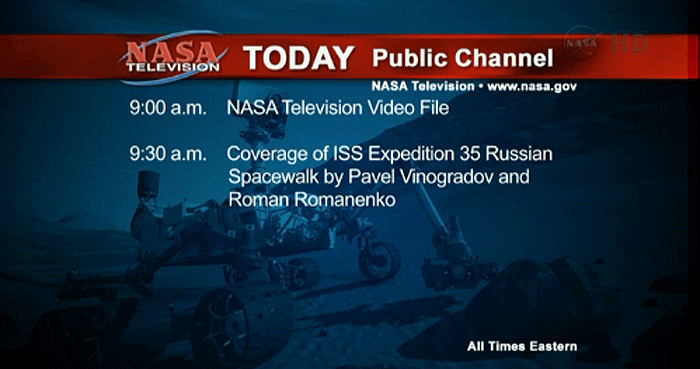
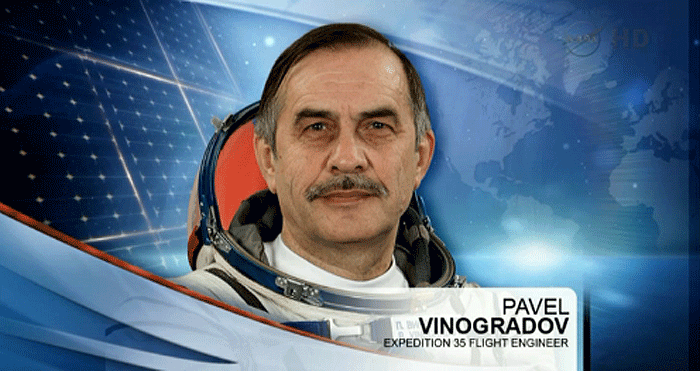
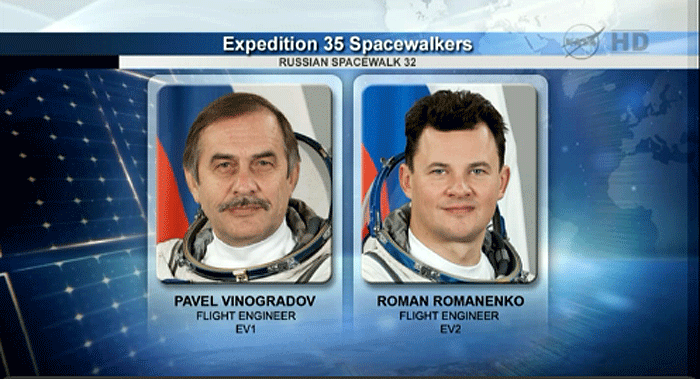


.
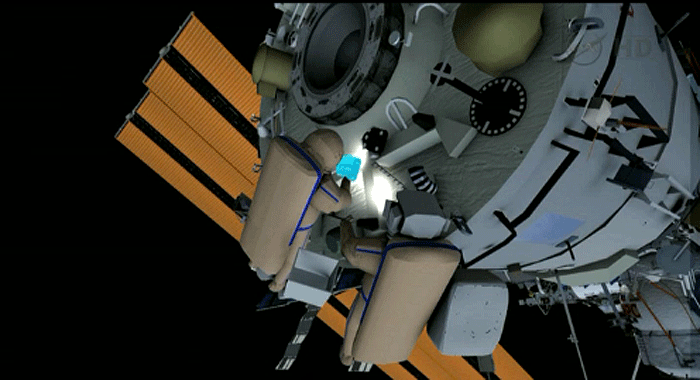
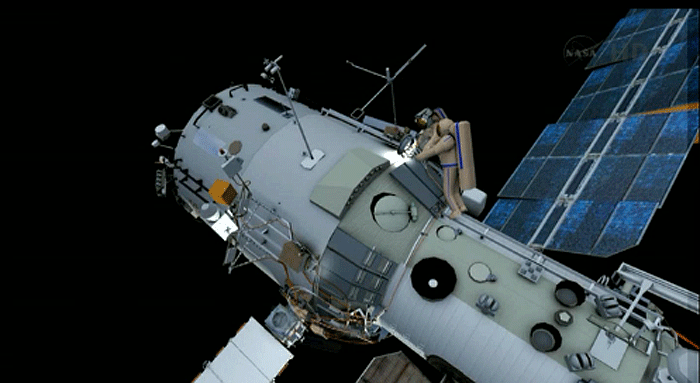
.
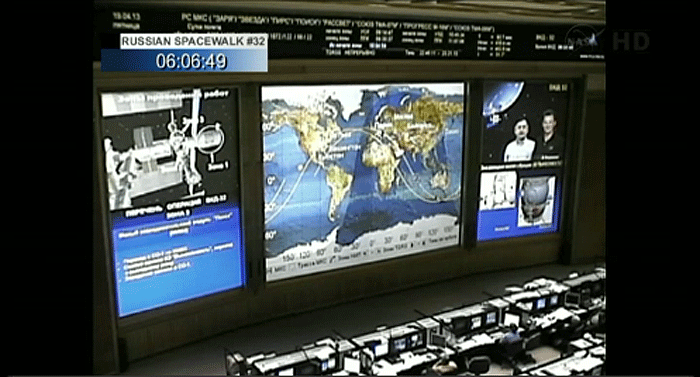
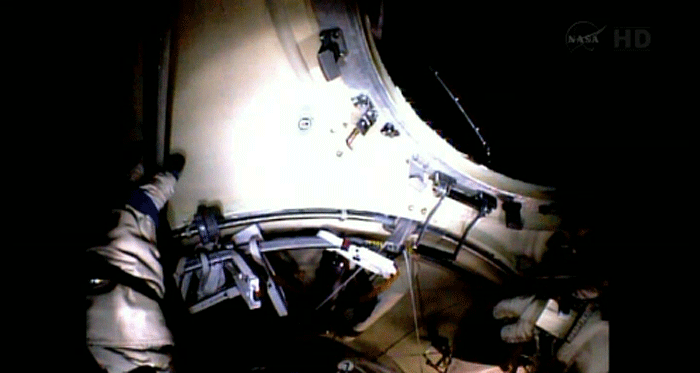
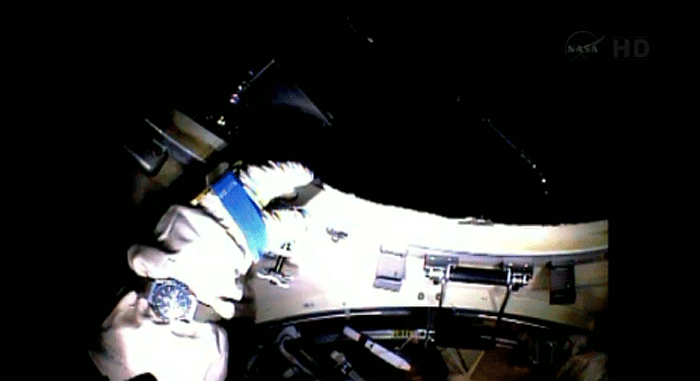
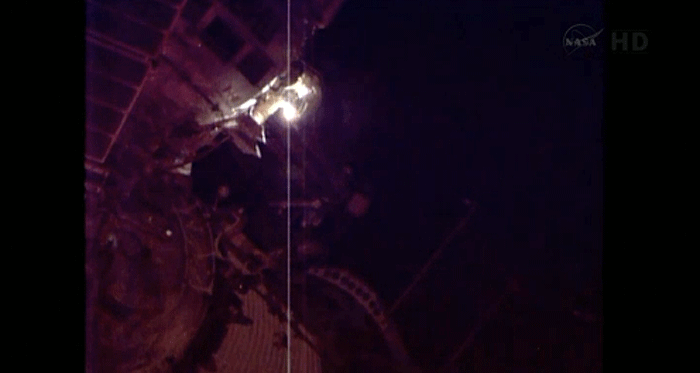
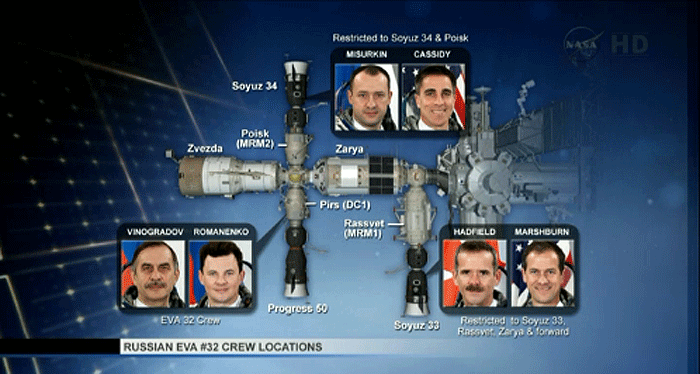


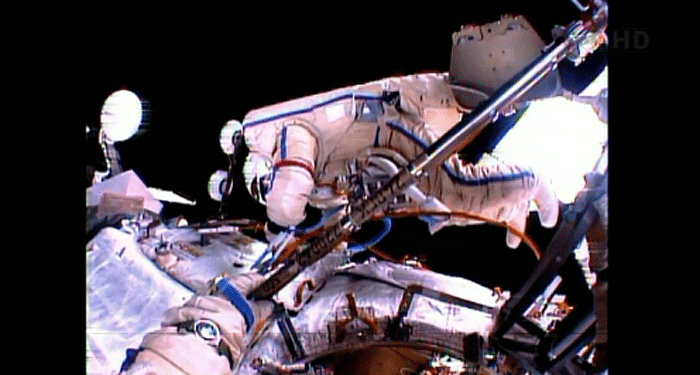
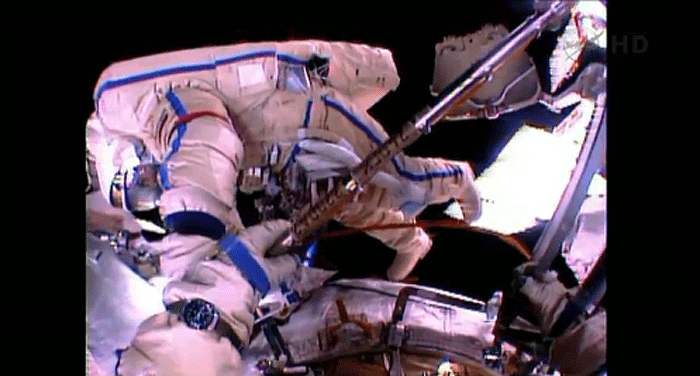
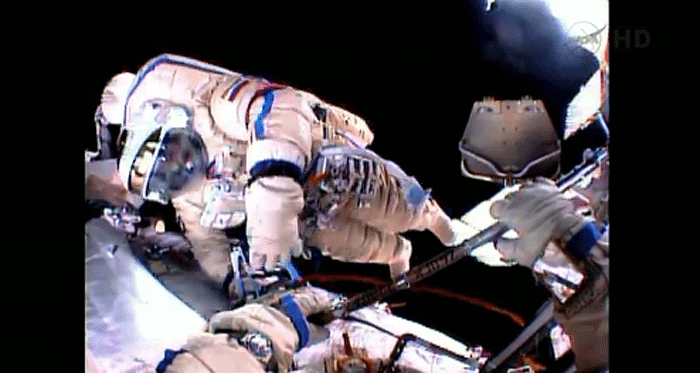
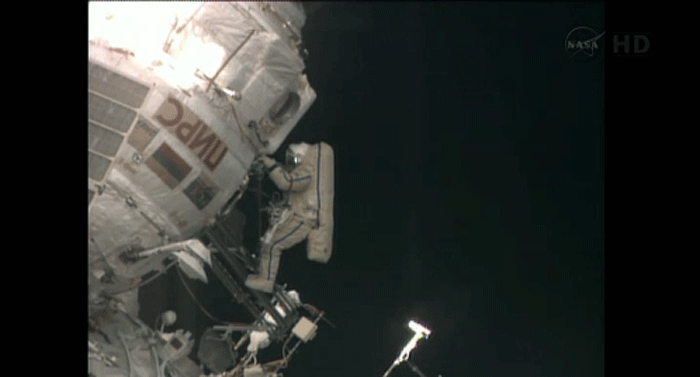

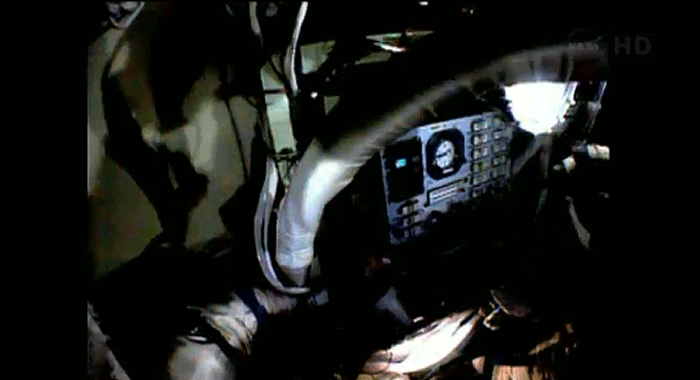
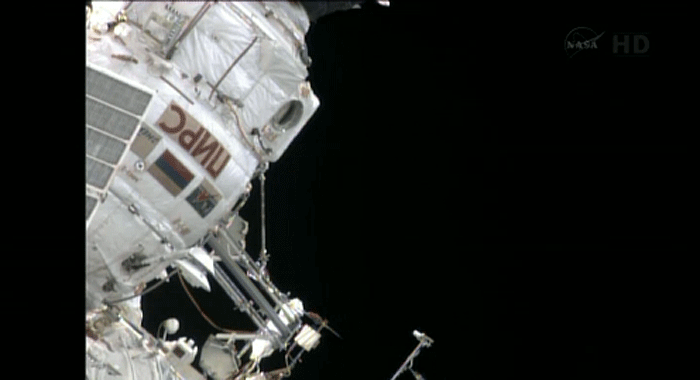
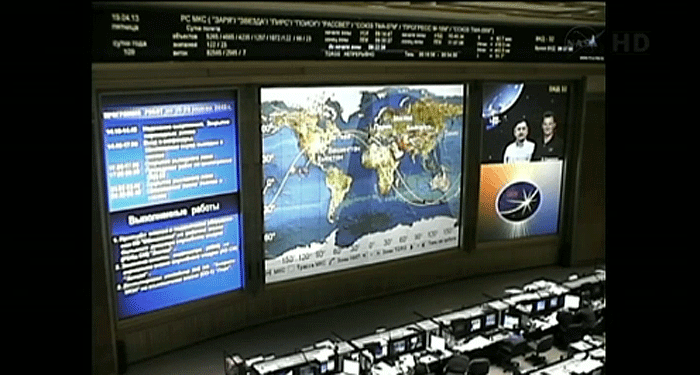

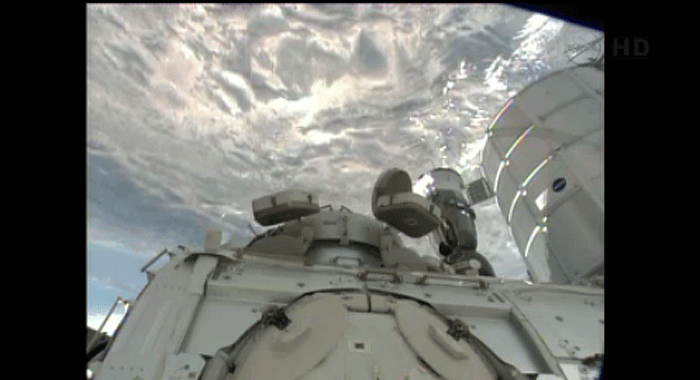
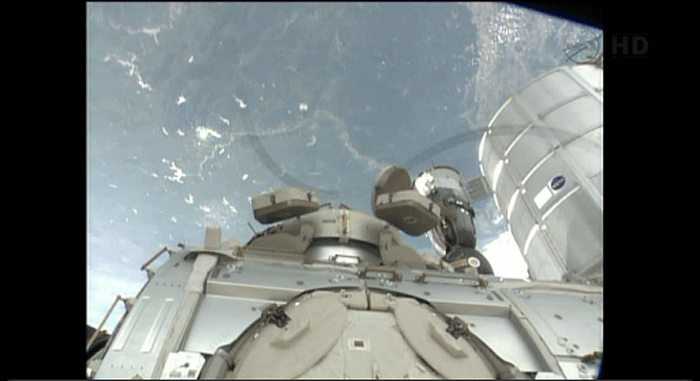

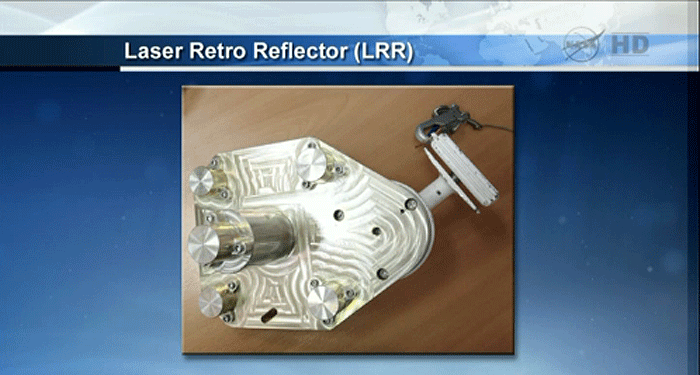
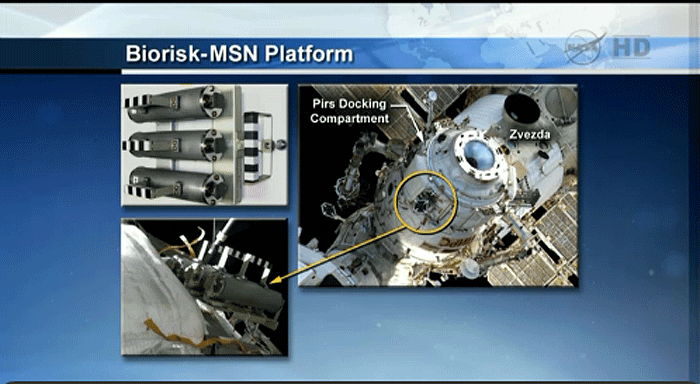
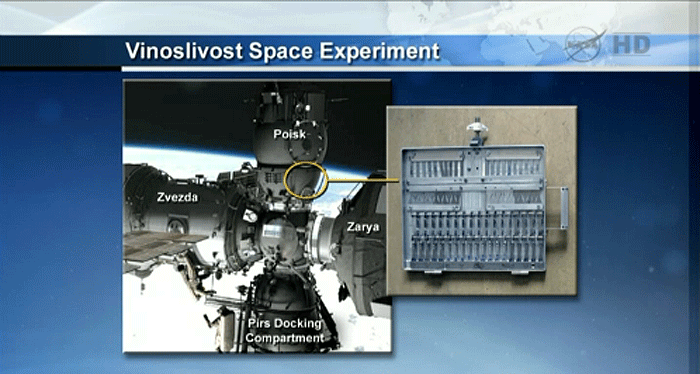
.
Update: 20.04.2013
.
Spacewalkers Deploy Plasma Experiment, Install Navigational Aid
.
Two members of the Expedition 35 crew wrapped up a 6-hour, 38 minute spacewalk at 4:41 p.m. EDT Friday to deploy and retrieve several science experiments on the exterior of the International Space Station and install a new navigational aid.
Russian Flight Engineers Pavel Vinogradov and Roman Romanenko opened the hatch to the Pirs airlock and docking compartment to start the spacewalk at 10:03 a.m.
The spacewalkers' first task was to install the Obstanovka experiment on the station's Zvezda service module. Obstanovka will study plasma waves and the effect of space weather on Earth's ionosphere.
While at the far end of Zvezda, Vinogradov and Romanenko replaced a faulty retro-reflector device, one of a suite of navigational aids that will provide assistance to the European Space Agency's Albert Einstein Automated Transfer Vehicle 4 cargo ship during its final approach for an automated docking to the space station in June.
After deploying a pair of sensor booms for Obstanovka, Vinogradov and Romanenko retrieved the Biorisk experiment from the exterior of Pirs. The Biorisk experiment studied the effect of microbes on spacecraft structures.
For their final task, the two spacewalkers translated to the Poisk module to retrieve one of two Vinoslivost Materials Sample Experiment panels from the Poisk module. As Vinogradov was removing the panel, it slipped out of his grasp and was irretrievable. The trajectory the panel took will move it away from the space station with no chance of the two making contact.
This was the 167th spacewalk in support of space station assembly and maintenance, totaling 1,055 hours, 39 minutes. Vinogradov's seven spacewalks total 38 hours, 25 minutes. Romanenko completed his first spacewalk.
This was the first of as many as six Russian spacewalks planned for this year. Two U.S. spacewalks are scheduled in July.
During Friday’s spacewalk, Flight Engineers Alexander Misurkin and Chris Cassidy were restricted to their Soyuz TMA-08M spacecraft and the Poisk module to which it is docked. This is a standard procedure during Russian spacewalks as hatches are closed to protect the remainder of the station while still providing crew members access to their Soyuz vehicles.
Commander Chris Cassidy and Flight Engineer Tom Marshburn, whose Soyuz TMA-07M spacecraft is docked to Rassvet module, had a freer run of the station, including the Zarya module and all modules on the U.S. side of the station. While Vinogradov and Romanenko performed their spacewalk outside the station, Hadfield and Marshburn continued scientific research and maintenance activities inside.
Marshburn delved into his first onboard session with the BP Reg, a Canadian medical experiment that seeks to understand the causes of fainting and dizziness seen in some station astronauts upon return to Earth. BP Reg collects data before, during and after the mission using inflatable cuffs attached to the legs. The experiment will not only help understand dizziness in astronauts, but also have direct benefits for people on Earth – particularly those predisposed to falls and resulting injuries, as seen in the elderly.
Marshburn also collected data from NanoRacks and transferred the data to a laptop computer. NanoRacks provides microgravity research facilities for small standardized payloads aboard the station.
Hadfield retrieved acoustic dosimeters that Cassidy deployed throughout the station Thursday and downloaded the data from these devices to track the noise levels that crew members are exposed to.
Hadfield also performed some maintenance on the Waste and Hygiene Compartment, one of the toilets aboard the station. The commander rounded out his workday loading software on a laptop computer associated with EXPRESS rack 8. Each of the eight EXPRESS racks aboard the complex provides simple, standard interfaces to accommodate up to ten small payloads, resulting in a total capability to operate up to 80 experiments.
Over the weekend, the Russian crew members will spend some time drying out their Orlan spacesuits and stowing the tools used in Friday’s spacewalk. All six crew members will participate in weekly housekeeping tasks and enjoy some off-duty time to rest and catch up with friends and family back on Earth.
Quelle: NASA
5509 Views
